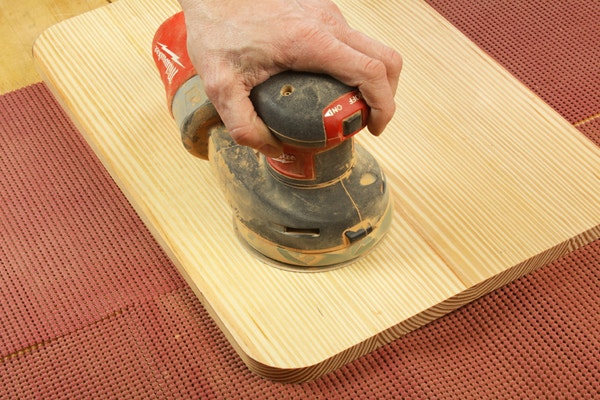Best Way to Flatten Pine?
I am making a bookcase out of solid clear pine and, after gluing boards together and sanding them with an orbital sander, the surface is wavy due to the grain of the wood (not perfectly flat). Any ideas how to get the surface really flat? Should I use a scraper and, if I do, will any hand sanding also cause waviness in the surface? – Jerry Kurowski
Chris Marshall: Jerry, it sounds like you are over-sanding the pine, and the difference in density between the early and late wood is what's causing your power sander to remove the softer wood faster than the harder wood. If you're good at sharpening and using a scraper, it will definitely flatten the surfaces again. I'd work diagonally to the grain direction first, then along the grain, and finally go back to a final sanding at 180-grit. Use a sanding block and do it by hand. Or, if the wood is really scraped well, you might be able to skip the final sanding and proceed straight to finish. Another flattening option would be to use a sharp bench plane. You could even send the boards through your thickness planer to flatten the wavy surfaces, but that only makes sense if the boards are still thicker than you need them to be at this point and narrow enough to still fit through the machine. Then sand again.
Next time you work with pine, try a "less is more" approach with your sanding regimen. Once the scratches from a coarser grit are removed by the next finer grit, you're done with that stage of sanding. Ultimately, sanding is more about removing scratches than leveling a surface. Once the scratches are gone and you've progressed up to 180- or 220-grit, call it good. No need to work harder than that.
Keep the inspiration coming!
Subscribe to our newsletter for more woodworking tips and tricks





